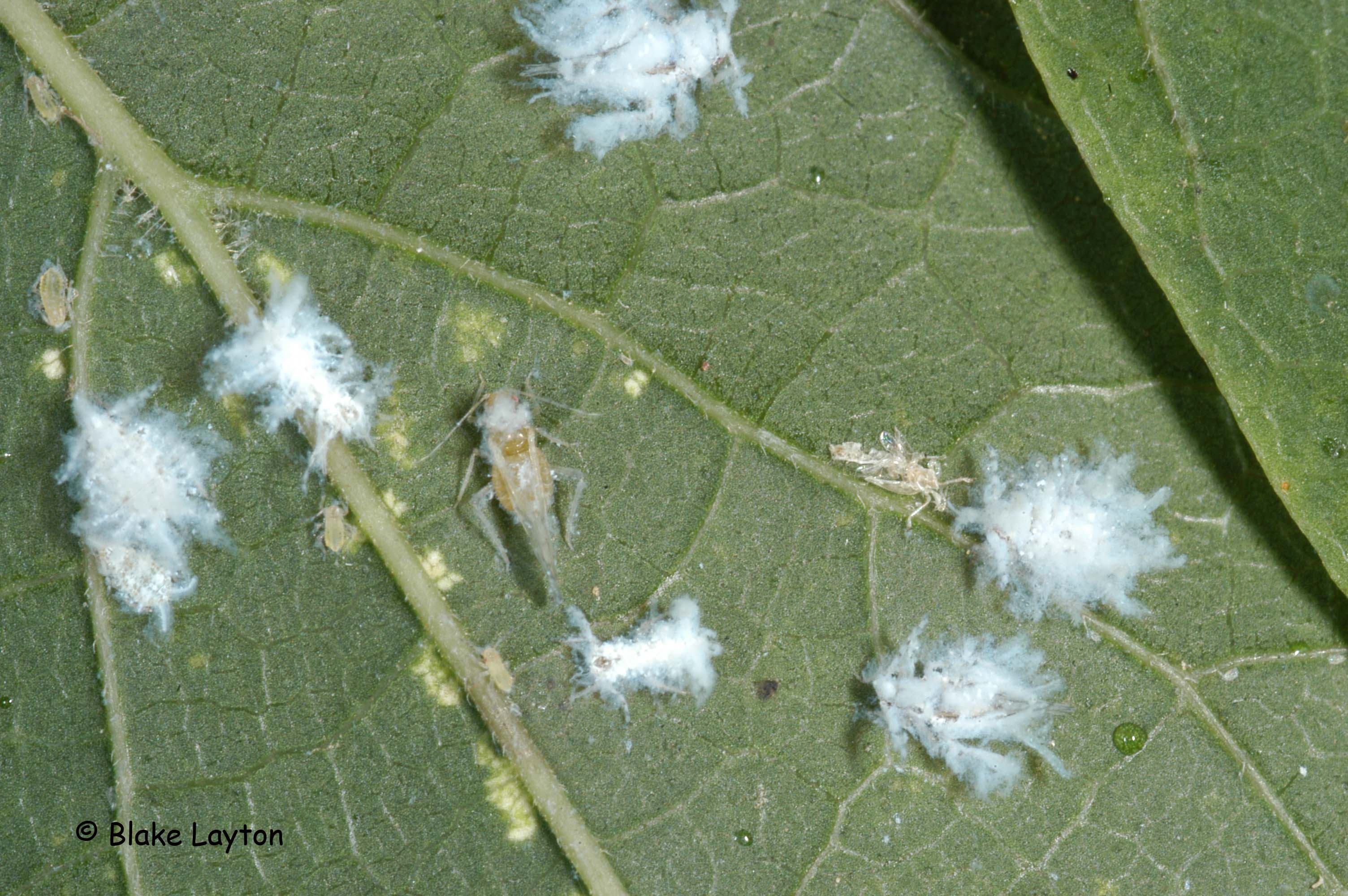Asian Wooly Hackberry Aphid, No. 21

Shivaphis celti
Order: hemiptera
Family: Aphidae
Snowflakes in August? In recent years, many Mississippians have been perplexed to see what look like snowflakes drifting by on a hot summer day. If you see such “snowflakes” this year, look for nearby sugarberry trees (We usually call them hackberry trees here, but technically they are sugarberries.) and you will probably find the source of this phenomenon. Asian wooly hackberry aphids are non-native insects that were first detected in the US around 1996. Since then, they have spread across the country. These aphids only occur on sugarberry or hackberry, Celtis spp. Populations begin building in the spring after trees leaf out and increase with each generation, often building to high numbers by late summer and early fall. Asian wooly hackberry aphids produce a lot of honeydew, which in turn results in heavy accumulations of black sooty mold. The sooty mold accumulates on the leaves of the host trees and on shorter plants growing near infested trees, as well as on vehicles and patio furniture located beneath infested trees.
Control: Controlling insects on large shade trees in urban settings is always problematic because of safety issues, application issues, and costs. Consequently, the do-nothing-approach of simply living with the problem is the most common method of dealing with this aphid. Heavy infestations can make trees unsightly, at least for part of the year, but they do no long-term damage to the tree. Removing the tree from the landscape is another treatment option. This extreme control option is reserved for situations where the resulting honeydew and sooty mold just causes too many problems to tolerate, and the owner does not want to commit to repeated insecticide applications. Examples would include trees growing over parking areas, patios, or in sensitive commercial landscape settings. Weigh the pros and cons carefully before taking this drastic step. Also, think twice before planting a sugarberry in such locations. Chemical control is a third option. Asian wooly hackberry aphids can be controlled by soil-applied applications of systemic insecticides containing imidacloprid, but such treatments are costly, especially for large trees, and results can be erratic. For best results treatment should be applied in late winter/early spring just before or as trees are leafing out. Avoid treating in late summer and fall when it is too late for treatments to have much effect before leaf drop.
See Insect Pests of ornamental Plants in the Home Landscape, page 5 and pages 35-36 for more information.
Blake Layton, Extension Entomology Specialist, Mississippi State University Extension Service.
The information given here is for educational purposes only. Always read and follow current label directions. Specific commercial products are mentioned as examples only and reference to specific products or trade names is made with the understanding that no discrimination is intended to other products that may also be suitable and appropriately labeled.

